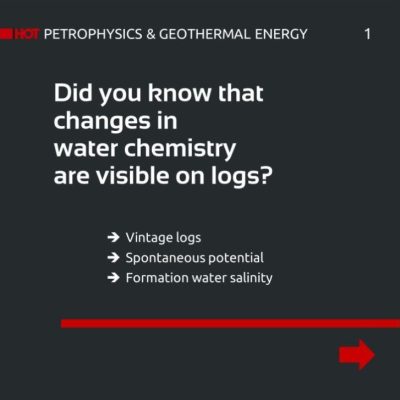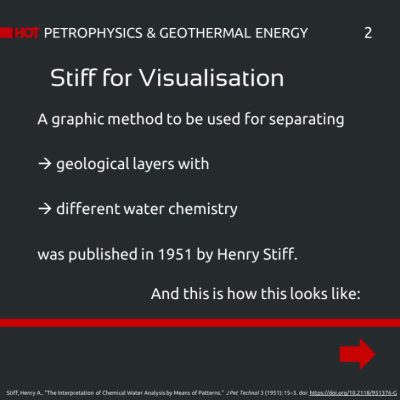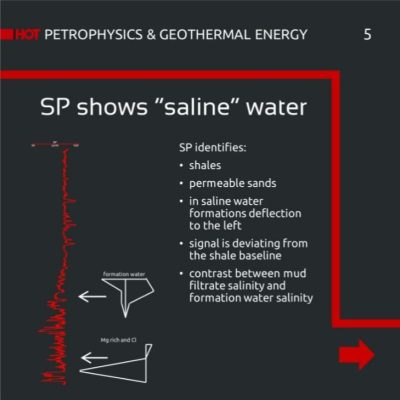Seeing Changes to Water Chemistry on Logs

Did you know that changes in water chemistry are visible on logs?
In geothermal work, tracking down mineralised formation waters can be challenging. Stiff diagrams usually give graphical information of water chemistry changes, but data is not frequently found. The shape of the Stiff patterns is as unique as the formation water salinity itself.
The SP log is physically linked to the contrast between formation water salinity and mud filtrate salinity. During drilling and the subsequent disturbance of the chemical equilibrium, the system develops a brand-new balance and shows this by a certain electrical signature.
The more contrast between formation water salinity and mud filtrate salinity, the better the SP signals develops. It is a relative measurement, yet its deflection relates to the sign of the salinity contrast.
➡ For low saline formations, the SP response deviates to the right.
⬅ For high saline formations the SP response deviates to the left.
This is especially useful if a certain SP signature can be linked to a Stiff pattern or certain water chemistry and then further traced from well to well.
The SP log is a relative measurement and requires some preparatory work. 🧐 But once unwanted logging effects are taken care of for the most part, the SP log is ready to be used to support geothermal reservoir management and geothermal feasibility studies.
Interested in Petrophysics for Geothermal Applications?
Our course “Petrophysics for Geothermal Applications”, taught by the author of this article, provides a practical guide of how to use and interpret well logs measured in the vicinity of planned geothermal sites to reduce uncertainties when assessing the feasibility of geothermal energy utilisation.
About the Author

- Dr Claudia Steiner-Luckabauer is the Principal Petrophysicist and geothermal expert at the HOT Energy Group. She has been working in a leading role on numerous integrated reservoir characterisation and field development projects, focussing on integrated petrophysical evaluation and formation evaluation.
- As HOT’s subject matter expert, Claudia has extensive experience assessing mature oil fields, heavy oil fields, gas condensate fields, gas fields, underground gas storage, clastic and carbonate settings, low-salinity environments, unconsolidated reservoirs, and fractured reservoirs (chalk, carbonate, granite basement, sandstone). She is also an experienced instructor of academic and industry workshops on various topics in geosciences and has authored numerous papers.
HOT is your trusted partner for geothermal consulting services.
We support our customers in identifying locations of high-quality geothermal resources, in mitigating the risk of subsurface tremors associated with geothermal applications, and in designing and developing geothermal projects.
Talk with us to see how HOT can propel your geothermal project to success!







